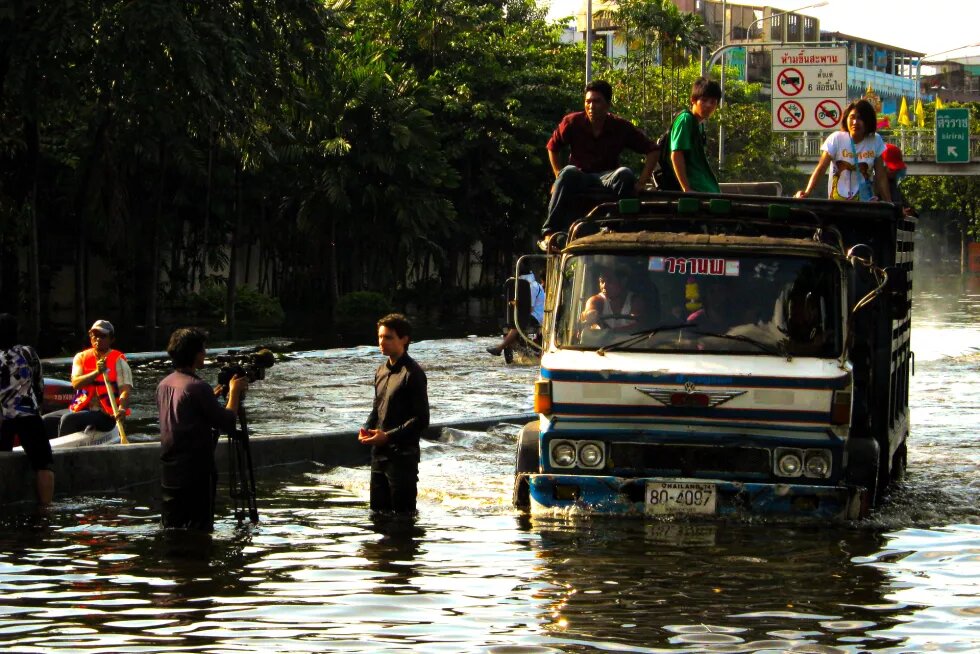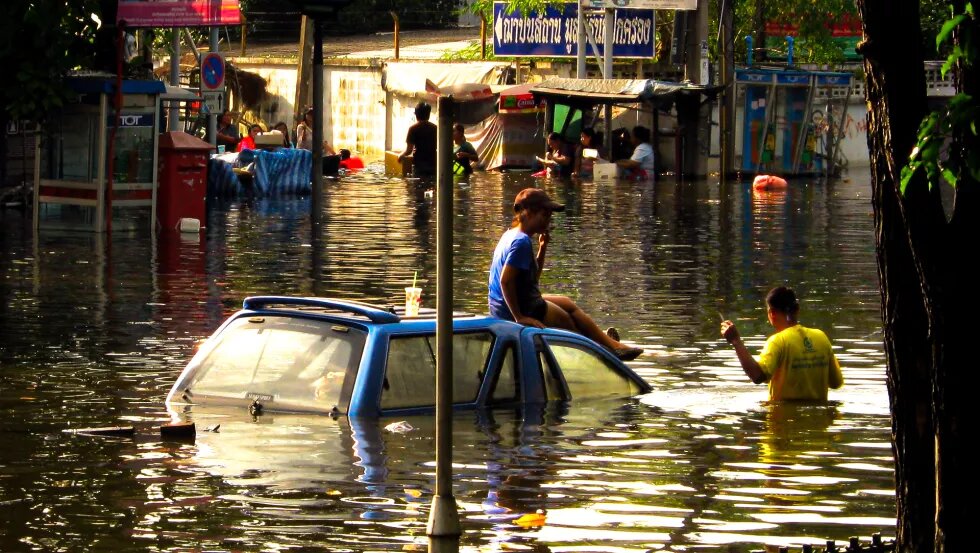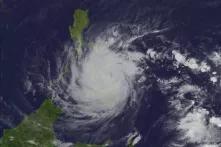
Global climate change is increasingly impacting people in Southeast Asia though disaster preparedness varies widely across each country and community. Government at all levels can strengthen their responses and collaboration to help people develop resilience in the face of catastrophes.

Climate change and myths about natural disasters
Because we are powerless to prevent natural disasters from occurring, catastrophes become extraordinary experiences that must be learned, understood, and lived with as a normal part of daily life. When calamities strike, there is a chance of injury, death, crop and property damage. For instance, the impact of heavy rain can result in flash floods and landslides, which can cause people to be injured or perhaps die of the disaster. Meanwhile, floods or drought on farmlands can cause crop damage, which can have a negative impact on our food security in the long run. Disasters are unconcerned about who we are, how we live, or what economic class we belong to. When they occur, they simply occur.
Effective disaster aid is required as a result in order to minimize any losses. Of course, this must be a long-term operation that leads to the development of core catastrophe knowledge among those who are affected and other stakeholders, in order to be effective. This managerial expertise can be passed down from generation to generation, beginning at the grassroots level and progressing to the highest levels of government. Financial assistance such as donations, equipment, and supplies are just temporary solutions. Unfortunately, it will not persist for long when compared to one’s own abilities to recognize and respond to natural calamities.
Traditional natural hazards such as earthquakes, floods, droughts, and storms are not currently being discussed extensively around the world. Instead, man-made hazards, particularly those that have an impact on the climate change issue, such as environmental, biological, and technological hazards, are being discussed more. These two sorts of catastrophes – natural and man-made – are classified as either quick onset disasters, in which case they might occur immediately, or slow onset disasters, in which case they can affect people more gradually. Once a catastrophe occurs, it may inflict significant damage, regardless of whether it is an immediate or delayed onset disaster.
The United Nations defines global climate change as long-term shifts in temperatures and weather patterns. Climate change issues have become more significant, whereas long-term movements were more natural before the 1800s. For example, oscillations in the solar cycle have now been linked to human activity, such as the greenhouse effect and deforestation, making the challenges of climate change more serious. As a result, contemporary climate change challenges caused by human activity had an impact on global warming later in the century. This resulted in a drought, in which evaporation and condensation processes became more rapid, causing the soil to dry out more quickly. In addition, the loss of water from the ground also causes the atmosphere to become more humid, which results in more violent rains and storms. Thus, global warming also had an impact on a heatwave that caused more forest fires to erupt in many locations, with the severity of the flames becoming increasingly severe. When the temperature rises year after year, the heat also has an effect on the sea level, which can cause erosion from waves and currents, as well as flooding.
Global climate change is having an increasing impact on the likelihood of catastrophic weather, and we are finding it increasingly difficult to cope with the consequences of these hazards. The Intergovernmental Panel on Climate Change (IPCC) indicated that:
“But it is not just about temperature. Climate change is bringing multiple different changes in different regions – which will all increase with further warming. These include changes to wetness and dryness, to winds, snow and ice, coastal areas and oceans.”
Southeast Asia's climate change situations
Southeast Asian nations, which are located in a tropical environment, have seen a variety of natural catastrophes as a result of climate change. Increased flooding has been due to rising air and ocean temperatures, which are linked to rising sea levels. As a result, more people will be at risk of flooding, such as in Bangkok in 2011, Jakarta in 2018 and 2021, and various states in Malaysia in 2021. Mount Semeru's lava dome fell in 2021 because of heavy rainfall in Indonesia. Typhoon Odette hit the Philippines in 2021 at 250 km p/hr. Because of the circumstances of climate change and catastrophes that affect numerous nations, international disaster management cooperation is required both regionally and worldwide. This is important in order to fortify the country in the event of a calamity.
However, each country's disaster management system, processes, and efficiency differs based on their particular situation including the social, economic, and political factors of that country. As a result, the establishment of collaboration between nations at both the regional and international levels not only help to mitigate the impact of the disaster, but also ensures that the country located in that region may expand and develop sustainably. Consequently, collaboration and coordination between nations at the regional and worldwide levels will help to increase the ability of countries that have received disaster assistance.
Southeast Asia's disaster management challenges
Even if man-made catastrophes are somewhat simpler to prevent, natural disasters, particularly those associated with climate change, are more difficult to regulate. Instead of simply accepting what will happen, it is vital for us to learn about it and become conscious of what is going on. As we cannot prevent natural disasters, what we can do is prepare ourselves to respond to them and minimize the effects that may result due to these catastrophes.
For Southeast Asian nations, disaster management cooperation is challenging, owing to the ASEAN practice of not intervening in each other's internal issues. As a result, regional cooperation in disaster response has mostly oriented toward humanitarian relief. Because disaster aid is critical, disaster management inside the region is required. For instance, the ASEAN Coordinating Centre for Humanitarian Assistance on disaster management (AHA Center) plays a significant role in strengthening regional disaster preparedness and mitigation networks. However, disaster management must also be taken into consideration on a national and local level at the same time. The reason for this is because disaster management involves cooperation from those two levels to meet the immediate requirements of affected people.
To achieve the goal of the International Decade for Natural Disaster Reduction (IDNDR), governments must develop the appropriate approach and seek better solutions in each situation. The United Nations General Assembly declared IDNDR for the 1990s and designated the United Nations Office for Disaster Risk Reduction (UNSDR) to operate and coordinate any activities related to disaster reduction around the world, particularly in developing countries. More than 30 years on, there is still a lot of work to be done by Southeast Asian governments, especially as dealing with natural disasters is part of the concept of human security.
Better preparation for climate change
Climate change has had a significant influence on the Southeast Asia area over the last several years. The consequences of this are not only serious to the people who live in the region, but they also render them more vulnerable to natural calamities. As a result, increasing awareness and preparedness, as well as soliciting involvement from diverse sectors of cooperation to promote and establish networks for long-term disaster management operations on a local, national, regional, and global scale, are essential.
However, in practice, depending on the country, putting such ideals into action might be difficult to do. Generally speaking, when it comes to disaster management, there are a number of stakeholders to consider from a disaster management standpoint. While the national government must be in charge of disaster management as a whole, at the local level, not only does the local government need to be taken into consideration, but also people in the communities, especially those who have been affected by disasters: volunteers, local organizations, and the mass media.
It is the responsibility of the local government to assist both the national government and local communities in providing the required expertise, people, and equipment to the impacted community. Consequently, decentralization is necessary in order for local governments to exercise their jurisdiction and provide better service. Communities must be conscious of their own role in disaster management too – this is crucial since they are the parties that are impacted by catastrophes and are therefore considered stakeholders. Participating in disaster management not only helps to protect them from catastrophe, but it also helps to strengthen them so that they can cope with any future disasters that may come.
Those who live in the community may work to strengthen their own community's resilience. Additionally, volunteers and the news media will aid in the improvement of their resilience process, making it more successful. While volunteers raise people's awareness of disasters, the news media may assist in the development of people's knowledge and understanding of disasters. Because individuals must study and comprehend the catastrophe before they can grow their awareness of what they have learnt, ‘disaster education’ is another crucial component to help us deal with being affected by disasters. People will be more able to respond appropriately to the situation, defend themselves, and lessen their vulnerability.
__
Dr. Wanwalee Inpin is the acting Dean of School of Social Innovation, Mae Fah Luang University, Thailand. Her teaching and research areas cover political science and public policy, disaster management, decentralization, policy implementation and local autonomy. She holds PhD. in Political Science and Public Policy from The University of Waikato, New Zealand and MA. in Political Science and Justice Studies from the Governors State University, US.
The views expressed in this article are not necessarily those of Heinrich Böll Stiftung




